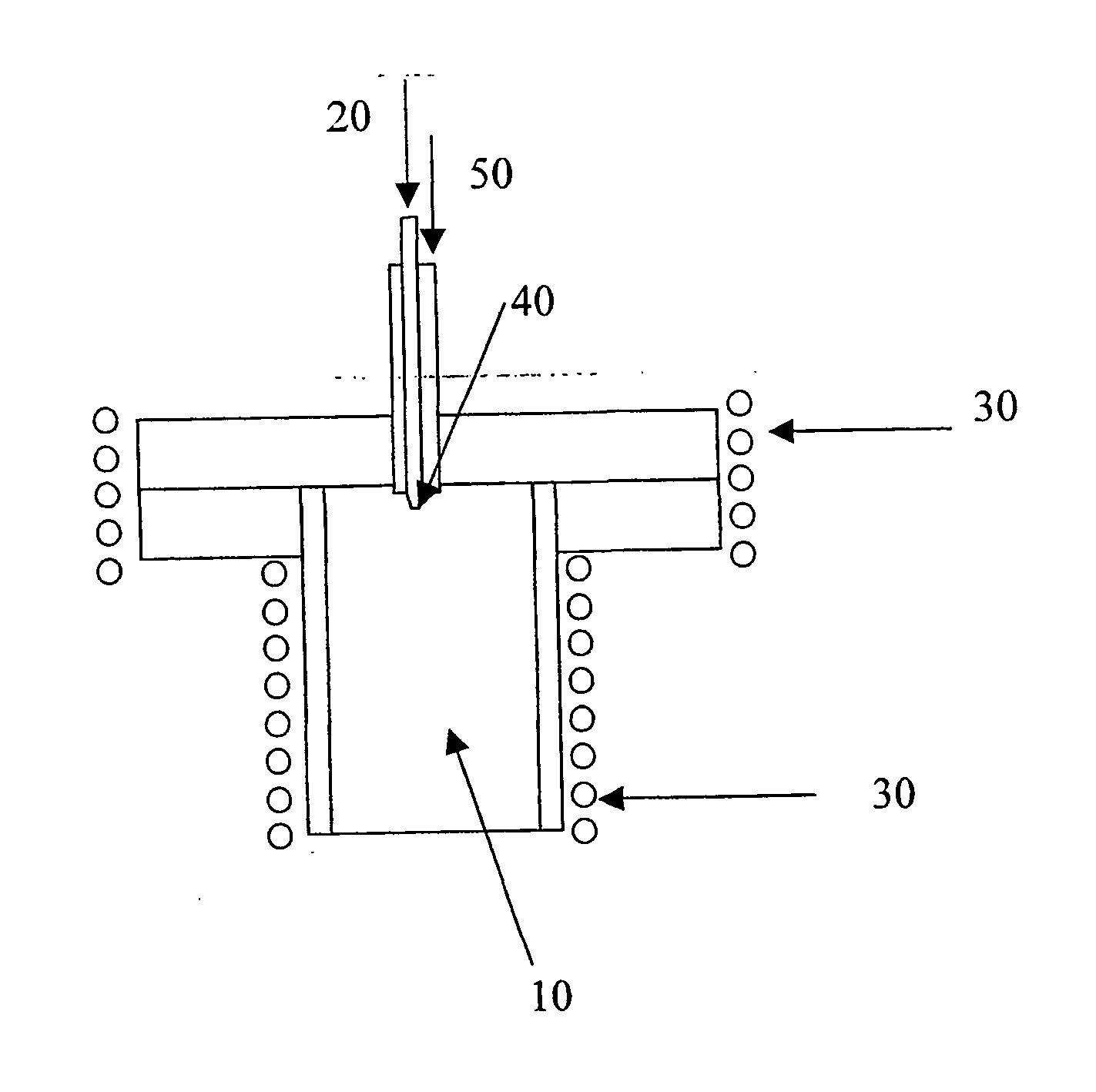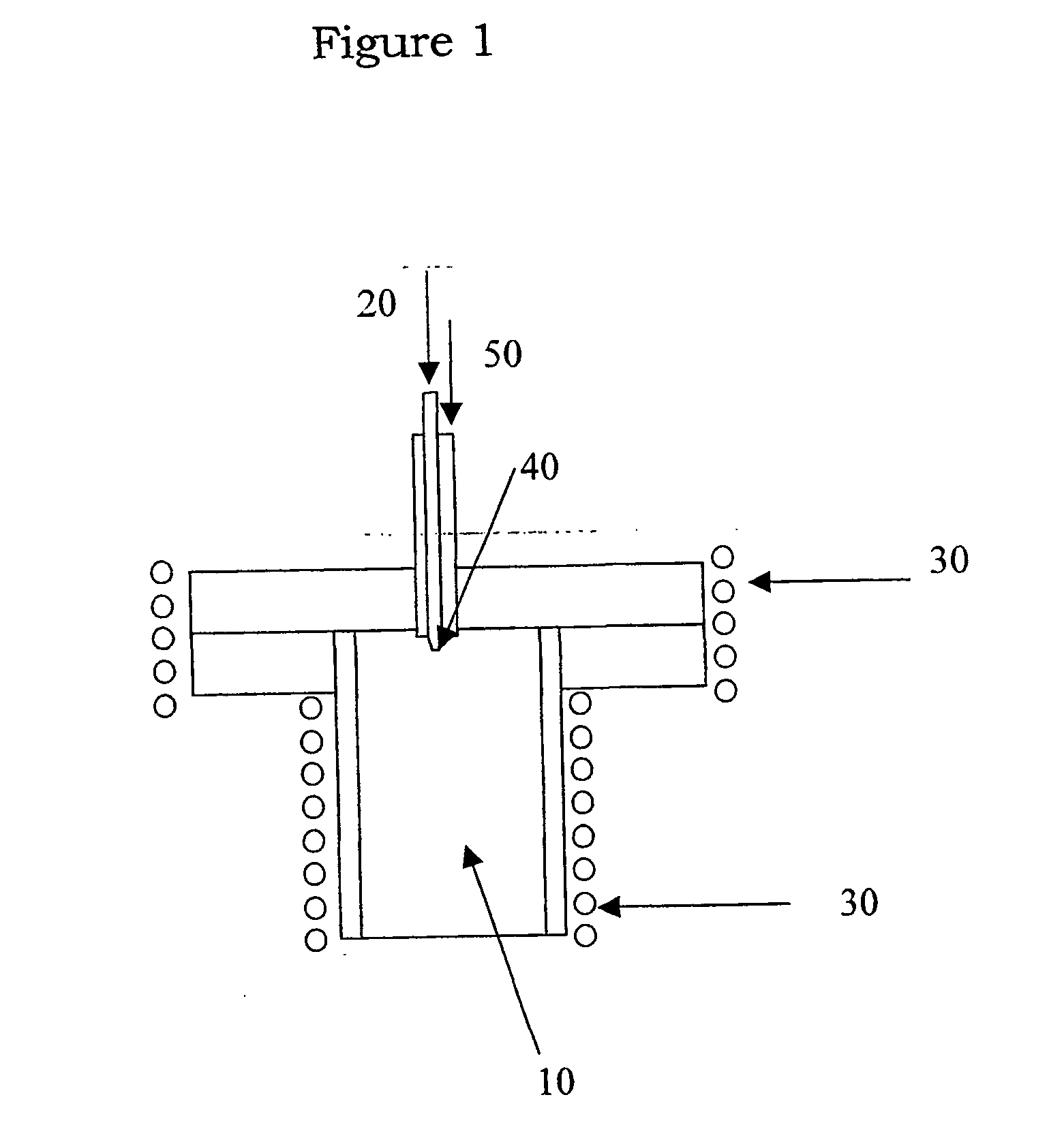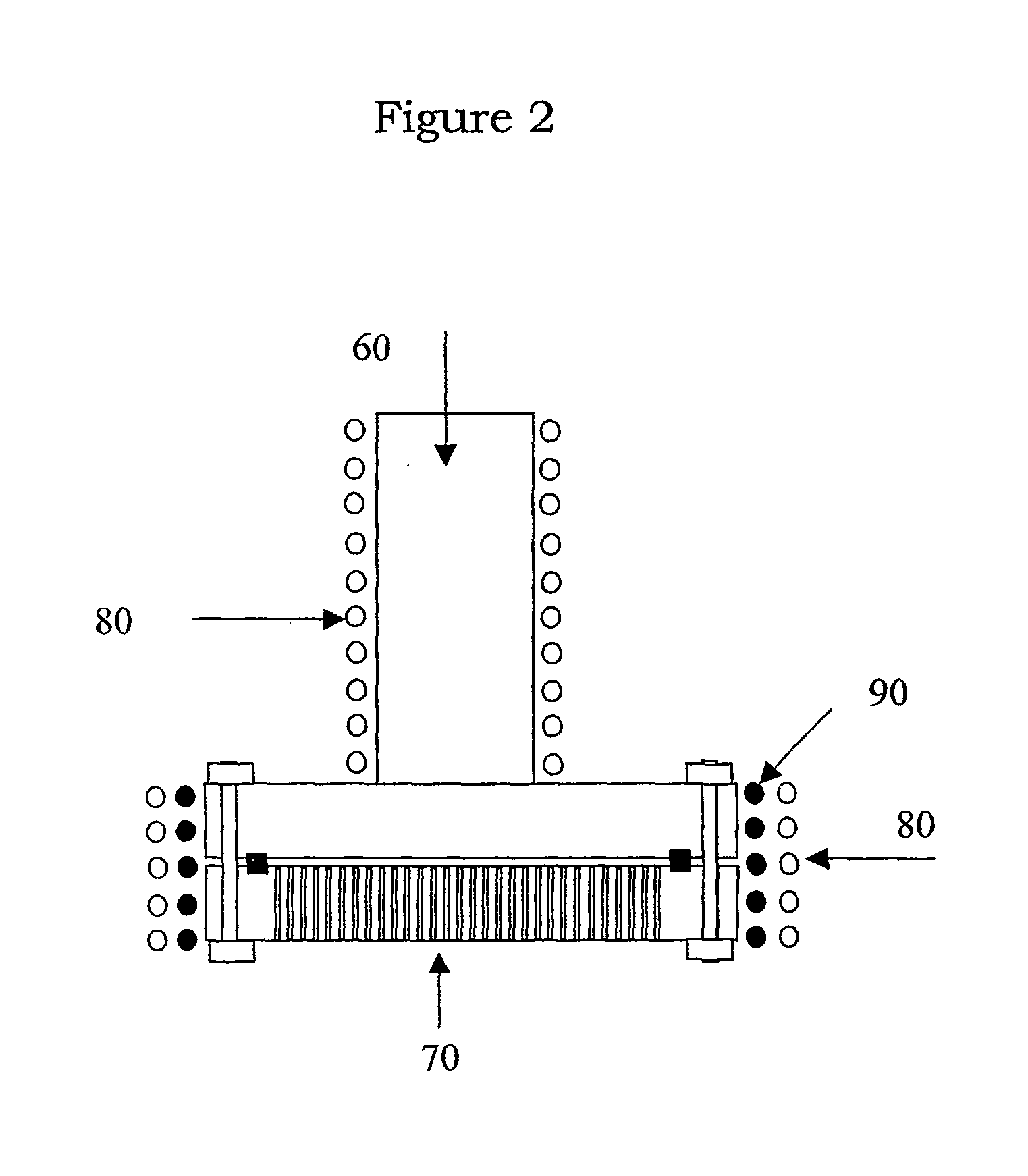Fabrication of high current coated high temperature superconducting tapes
a technology of superconducting tape and high current, which is applied in the direction of superconducting devices, permanent superconductor devices, coatings, etc., can solve the problems of high cost of materials and the process used to manufacture them, rapid degradation of properties of these materials, and limited techniques in several ways
- Summary
- Abstract
- Description
- Claims
- Application Information
AI Technical Summary
Benefits of technology
Problems solved by technology
Method used
Image
Examples
Embodiment Construction
[0061] Tetramethyl heptanedionates of yttrium, barium [adducted with phenanthroline] and copper are obtained from Inorgatech, Mildenhall, Suffolk, U.K. The Y compound is dissolved in solvent containing 2 parts of THF and 1 part isopropanol. The Ba compound is dissolved is a solvent containing 3.5 parts THF and 1 part isopropanol. The Cu compound is dissolved only in THF. The molarity of overall solution is 0.03 M / l.
[0062] The liquid components are combined at room temperature in an ultrasound mixer in the ratio of 1 part Y composition, 2.15 parts Ba composition and 3 parts Cu composition. The mixed liquid precursor is pumped at a rate of 0.25 ml / min through a HPLC pump. From the pump, the precursor is pumped through 0.0625" OD, 0.010" ID stainless steel tubing at a pressure of 5 psi to the vaporizer.
[0063] The mixed component precursor enters the vaporizer through the nozzle that is made from a 0.0625" OD, 0.01" ID tubing swaged to an ID of 0.004" at tip. The tip is placed in a vapo...
PUM
| Property | Measurement | Unit |
|---|---|---|
| temperature | aaaaa | aaaaa |
| temperature | aaaaa | aaaaa |
| temperature | aaaaa | aaaaa |
Abstract
Description
Claims
Application Information
 Login to View More
Login to View More - R&D
- Intellectual Property
- Life Sciences
- Materials
- Tech Scout
- Unparalleled Data Quality
- Higher Quality Content
- 60% Fewer Hallucinations
Browse by: Latest US Patents, China's latest patents, Technical Efficacy Thesaurus, Application Domain, Technology Topic, Popular Technical Reports.
© 2025 PatSnap. All rights reserved.Legal|Privacy policy|Modern Slavery Act Transparency Statement|Sitemap|About US| Contact US: help@patsnap.com



